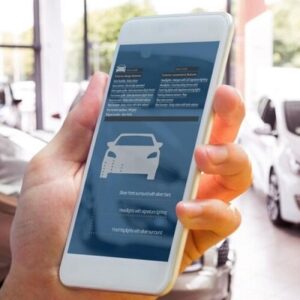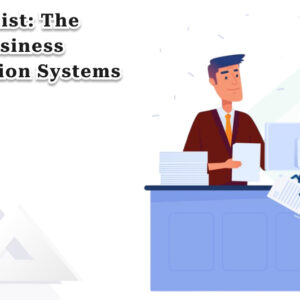By 2025, there will be strong competition in the on-demand delivery market. Innumerable delivery apps are competing for users’ attention, from multinational corporations to regional entrepreneurs. It is more difficult than ever to create an app that really stands out in the crowded digital market, whether it is for meals, groceries, courier services, or pharmacy delivery.
In order to stand out in a crowded market, how can you design your delivery app? Innovation, user experience, personalization, and brand uniqueness hold the key to the solution.
In this blog, we’ll walk you through the key strategies, must-have features, and technology considerations to help you create your delivery app that makes a lasting impression in 2025 and beyond.
Why the Delivery App Market Is So Competitive
Delivery apps are now crucial in all businesses because of the post-pandemic increase in on-demand services. However, saturation has also resulted from this growth. On their phones, the majority of users already have two or three delivery apps. Therefore, your app is likely to be lost in the shuffle unless it provides something better, faster, or more customized.
Building an experience that addresses actual issues and encourages users to return is therefore essential; it’s not enough to simply develop a delivery app.
Step 1: Define Your Niche and Target Audience
The first step to standing out is not trying to be everything for everyone.
- Are you targeting hyperlocal grocery delivery?
- Do you want to focus on eco-friendly courier services?
- Is your goal to serve rural areas with limited service coverage?
Zeroing in on a niche helps you build features, branding, and messaging that resonate deeply with a specific audience, making your app more relevant and less replaceable.
Step 2: Offer a Unique Value Proposition (UVP)
What makes your delivery app different from others?
Your unique value proposition could be:
- Ultra-fast delivery within 15 minutes
- No-contact or drone-based delivery
- Zero commission model for small businesses
- Subscription-based perks for loyal users
- Focus on sustainability or social impact
Clearly define this UVP and make it central to your app’s onboarding, ads, and user journey.
Step 3: Prioritize Seamless and Intuitive UX
No matter how unique your concept is, a clunky or confusing user interface will kill it.
To ensure a standout user experience:
- Design for speed and simplicity
- Minimize the number of steps to place an order
- Ensure easy navigation with intuitive menus and CTAs
- Optimize for both iOS and Android platforms
- Use real-time visual feedback (order status, map tracking)
Bonus tip: Run usability tests with real users before launch.
Step 4: Include Features That Matter (and Ditch the Ones That Don’t)
While it’s tempting to include every shiny feature, a lean and purposeful app always performs better. Focus on features that users need and use:
Essential Features:
- User sign-up and profile management
- Real-time order tracking with GPS
- Multiple payment options (cards, wallets, UPI, BNPL)
- In-app customer support/chat
- Ratings and feedback system
- Delivery scheduling and ETA updates
Add-On Features to Stand Out:
- AI-powered product suggestions
- Smart reorder option
- Group ordering for families or offices
- Eco-friendly delivery choices
- Loyalty rewards and gamified offers
Step 5: Choose the Right Tech Stack
To build a delivery app that performs reliably and scales with growth, you need a modern, flexible tech foundation.
Recommended Tech Stack in 2025:
- Frontend: Flutter, React Native (cross-platform)
- Backend: Node.js, Django, or Ruby on Rails
- Database: PostgreSQL, MongoDB
- Real-time Services: Firebase, Socket.io
- Cloud Hosting: AWS, Google Cloud, Azure
- Maps & Routing: Google Maps API, Mapbox, Here API
- Push Notifications: OneSignal, Firebase Messaging
Working with the right development team ensures not only quality but long-term adaptability as you grow.
Step 6: Branding, Positioning, and Storytelling
People don’t just download apps—they adopt brands. To stand out:
- Develop a memorable brand name and logo
- Choose a bold yet clean color palette
- Use storytelling in your app’s copy and onboarding screens
- Highlight your app’s benefits—not just features
- Be transparent about your mission, pricing, and process
Example: An app promoting local produce deliveries can share stories of farmers, sustainability goals, and impact metrics.
Step 7: Optimize for Speed and Performance
Slow loading, laggy transitions, and bugs are instant deal-breakers.
- Optimize images and animations
- Run speed tests and performance audits regularly
- Monitor crash reports and fix issues fast
- Ensure offline access for features like order history
High performance isn’t just a nice-to-have—it’s the baseline users expect in 2025.
Step 8: Marketing That Cuts Through the Noise
Launching a great app is just the beginning. You need to get it in front of the right audience.
Growth Tactics:
- Early access or beta programs
- Influencer partnerships and niche micro-influencers
- Localized ad campaigns and events
- Referral incentives and promo codes
- Collaborations with small businesses or local vendors
Remember: Your first 1,000 users can become your biggest advocates—if you give them a reason to care.
Final Thoughts
Creating a delivery app in 2025 is easier than ever—but creating one that stands out takes vision, strategy, and relentless focus on user experience.
By carving out your niche, offering something truly valuable, and executing with excellence, you can launch a delivery app that doesn’t just compete, but leads.
So, are you ready to build your delivery app that users love and competitors envy? The future of on-demand is custom, and your opportunity is now.




